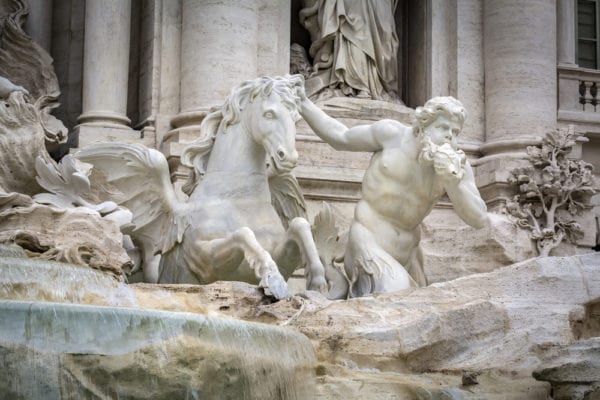From hippogriff to centaur: The horse-hybrids of Greek mythology
From hippogriff to centaur: The horse-hybrids of Greek mythology
From hippogriff to centaur: The horse-hybrids of Greek mythology
-
Hannah
-
Hannah

In my latest novel Aphrodite’s Tears, set on a Greek island, I draw extensively on the mythology of the Ancient Greeks. Here is my heroine’s impression of a hall in her home on the island:
The sheer size of the room with its high, ornate domed ceiling, supported by delicately veined marble pillars, gave the impression she was entering a cathedral. Her eyes then took in the floor, which was paved with fabulous marble tiles arranged in a huge mythological picture: Pegasus the winged white horse surrounded by the Muses – the nine daughters of Mnemosyne and Zeus.
Are you familiar with Pegasus? Many people think ‘a pegasus’ is a winged horse, but in fact the correct term for these mythical creatures is pterippi, and Pegasus was the name of a particular pterippus. He was of divine origins – fathered by the sea god Poseidon, he sprang from the remains of the Gorgon Medusa when she was decapitated by Perseus. For some time he was ridden by the monster-slayer Bellerophon in his adventures.

‘Athena and Pegasus’ by Theodor van Thulden
According to legend, Pegasus could create a water spring by stamping his hoof on the ground, and he did so for the Muses on Mount Helicon. Eventually, Zeus, king of the gods, made Pegasus his own and had the pterippus draw his chariot of thunder. In honour of Pegasus’s loyalty, he made him a constellation, visible in the northern sky to this day.
Another horse-hybrid of the Ancient Greeks was the hippocampus, which had the hindquarters and head of a horse but had a fish’s tail (or, in some depictions, the tail of a serpentine sea monster). These beasts drew Poseidon’s chariot across the ocean.

Trevi fountain, Rome
The hippocampus is not to be confused with the hippogriff, another equine hybrid, made famous in recent years by the Harry Potter books. This mythical creature had the body of the horse but the head of an eagle. It was the symbol of Apollo, the Greek sun god.

‘Roger délivrant Angélique’ by Louis-Édouard Rioult
Of all the horse-hybrids, perhaps the most intriguing is the centaur (or hippocentaur) – for he was a fusion of horse and man. According to legend, the centaur was the product of an affair between the cloud nymph Nephele and the mortal king Ixion. The Ancient Greeks thought of centaurs as wild beasts, and many were slain in their myths. The Furietti Centaurs, sculptures of the Hellenistic or Roman era, depicted gentler creatures, however; here is the Old Centaur copied in marble, at the Louvre.

And what of the unicorn? you may be wondering. Well, in fact the unicorn was not a mythological creature to the Greeks, but a real one. Accounts by early Greek writers show they believed that these horned horses indeed existed, in the land of India, which was impossibly exotic and fantastical to them.

‘The gentle and pensive maiden has the power to tame the unicorn’ by Domenichino
I’ve heard the unicorn they sighted were actually rhinos.